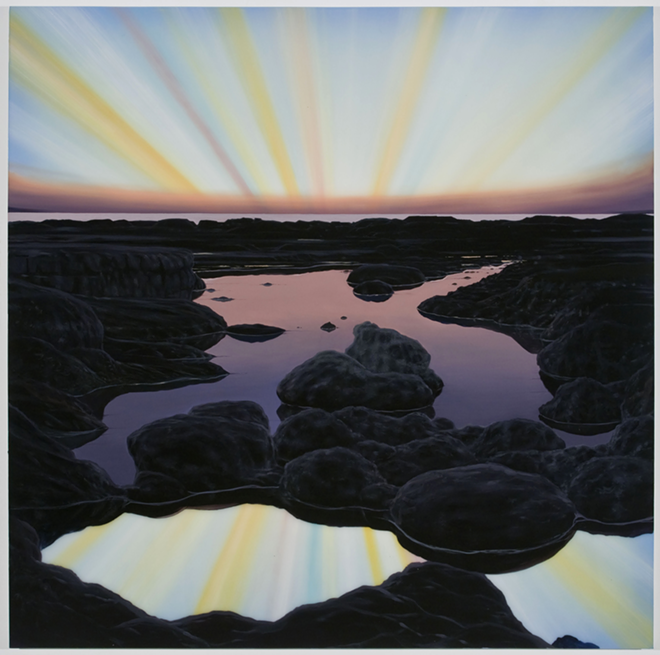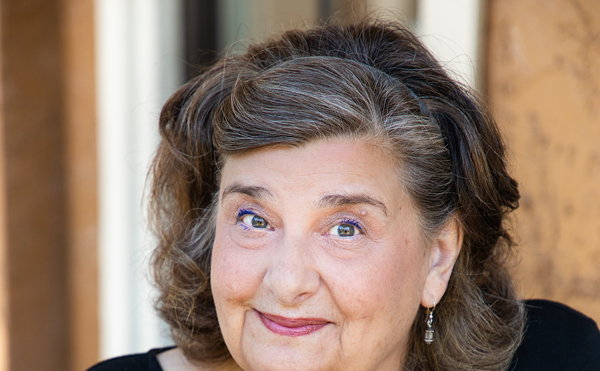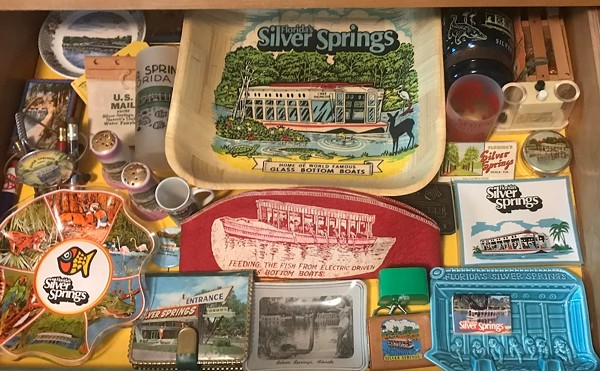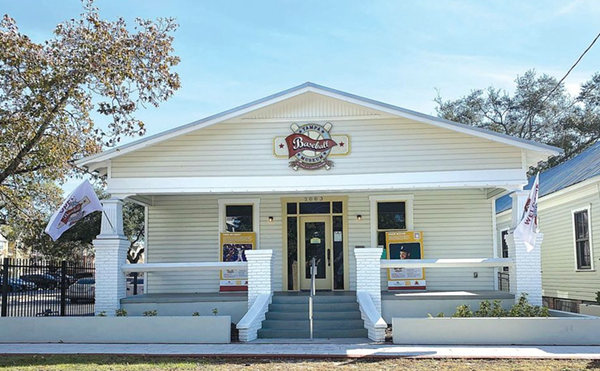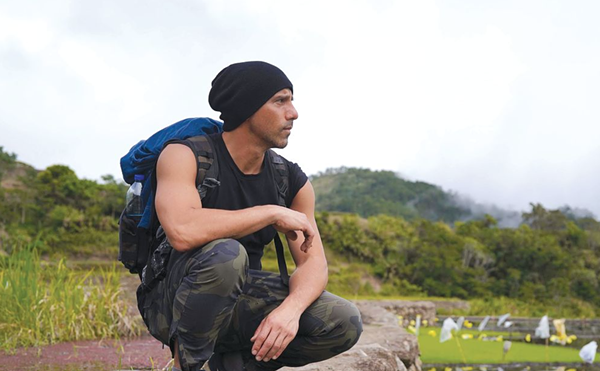Lost Worlds, Living Matter(s)
Runs through Dec. 23 at the Dunedin Fine Art Center,
1143 Michigan Blvd, Dunedin,
727-298-3322, dfac.org
If you’re a regular at the Dunedin Fine Art Center, you know that exhibitions there follow a pattern. They’re usually organized around a thought-provoking theme — not something so arty that Uncle Bob can’t relate, but also not dumb. They showcase local artists — typically, the best ones — as well as identifying and pulling in intriguing talents from afield. And they accomplish all of this with grace and even a bit of flirty humor, like your friend who looks dynamite but says, “What, this old thing?” (and means it because she isn’t wearing anything fancy, she just has great taste).
Exhibitions don’t make themselves. As I was visiting Lost Worlds and Living Matter(s), two of DFAC’s current exhibitions, they struck me as some of the strongest work yet done by curator Catherine Bergmann. It’s not a stretch to say that Bergmann is organizing some of the best shows outside of museums in Tampa Bay, or that in doing so she has become one of the most important champions that local artists have now.
Lost Worlds features five artists who make hypnotic, sometimes disorienting riffs on landscape. Brooklyn-based Shane McAdams is a standout with his weird and wild oil-on-polystyrene paintings. Depicting rocky, barren vistas — which sometimes look like Arizona and other times seem to reveal an unknown planet — he paints vignettes in the center of foam canvases, then carves into the foam around them to create a trompe l’oeil effect of textured rock. As a result, each landscape appears to be painted on a piece of itself, like a mirage inside a puddle of water on rugged ground.
A selection of works by Tampa-based Edgar Sanchez Cumbas digs into his past for deconstructed landscapes populated by a solitary, monk-like figure. (For about the past four years, he has been painting mostly abstractly.) A particularly good one is Mount Meru, which builds a towering mountain out of views of it from different perspectives. Two other artists, South Florida-based Lise Drost and William Walmsley (an FSU professor who died in 2003), use maps and various printmaking techniques to pull apart and reassemble familiar geographies.
A kind of postscript comes in the form of “The Night Swim,” a big dark oil painting by St. Petersburg-based Neverne Covington. In the painting a white plastic swimming pool slide sits perched atop a floating dock in water that could be a lake or a river. Covington casts an eerie light on the scene, in which no swimmers are visible, leaving a viewer to wonder if the vision is a dream or a memory. (And if a memory — happy or tragic?)
Covington’s work is the bridge that connects both exhibitions. In Living Matter(s), a show clustered loosely around the intersection of nature and art, three of her charcoal drawings of tangled Florida plants on vibrant color backgrounds are your view when you enter the gallery. They show off a quality of Covington’s draftsmanship that I’ve long admired — its robustness and sense of vital energy barely contained. With charcoal, she contours the woody stalks and fibrous strands of tropical flora, as if they bore the exotic plumage of a bird or the erotic curves of a figure, placing each specimen against a painterly wash of color. The results feel like portraits of our local landscape’s characteristic plants, teeming with personality and twisting through space with life-like volume, which Covington captures to unnerving effect.
Bergmann pairs Covington with two ceramic sculptors who used to be shown in St. Petersburg by Mindy Solomon Gallery. Bonnie Seeman’s teapots and vessels suggest overripe fruit bursting at the seams. In their pink crevices she places lamp-worked glass flowers, bugs and delicate feelers, or teeth, which imbue the fleshy slits with a carnivorous edge. Depending on how literally you want to take them, they’re Venus fly trap-like creatures of nature or decorous metaphors for desire and danger; in either case, their craft is sheer delight. By comparison David Hicks’ abstracted floral forms, which typically sit on a bulbous base and blast horn-shaped buds into the air, are a study in minimalistic elegance.
It’s hard not to keep cooing about everything in the show. None of the work is groundbreaking, but it all looks so darn good together. Opposite in spirit from Covington is Maine-based Mary Hart, a painter who nestles miniature oil-on-panel renditions of natural phenomena and everyday objects — blades of grass, chestnuts, a rubber band and, somewhat predictably, insects — into thick metallic frames. The best of these is a richly detailed, inch-sized painting of a bone fragment that is truly mysterious at first glance.
St. Pete-based painter Steven Kenny is just as painstaking a realist but with aims that are more narrative and, ultimately, more surreal. The exhibition includes three of his oil on linen paintings. In one, a man’s hand morphs into a tree branch, creating a perch for a small brown bird, while a ribbon-like snake wends its way up his wrist. It’s a fantastical moment of suspense that Kenny freights with parable-worthy questions: Will evil (snake) triumph over innocence (bird), and what is man’s role?
Watercolor paintings by Jackie Kazarian and a collaborative graphic novel project by Rachel Simmons and Julian Chambliss, two professors at Rollins College in Winter Park, round out the show. The graphic novel’s story centers on “Future Bear,” a polar bear who time-travels back from the future to help present-day humans stop climate change. The project is unlike anything else in the exhibition, both because it’s quite text-heavy as a comics-style wall panel and because Simmons and Chambliss hope to circulate it outside of art galleries as an activity workbook for teens and children, copies of which are on view and available for visitors to take away. Despite its difference the project isn’t a tangent or a distraction, just another, unexpected layer of cool in Living Matter(s).

